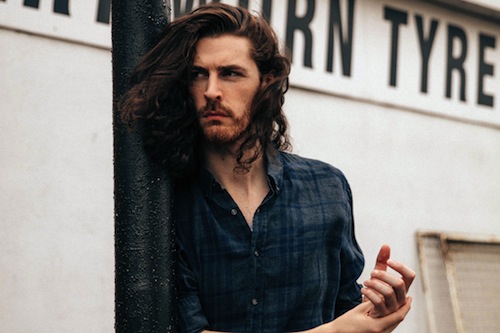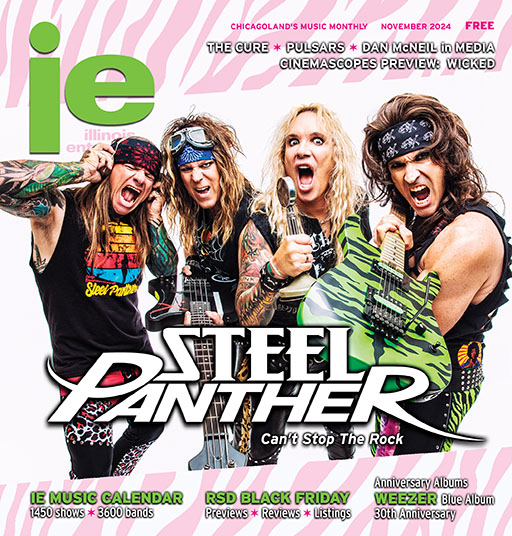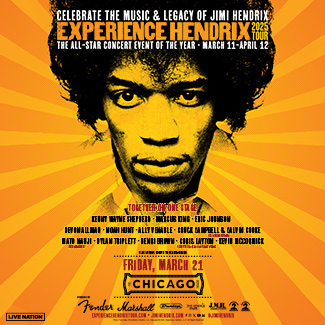Cover Story: Hozier
When Andrew Hozier-Byrne looks back on his past four successful years — ever since his eponymous debut disc went #1 in his native Ireland and Top 10 around the world, fueled by the irresistible, Gospel-fervent smash single “Take Me to Church” — he has a tough time remembering all his subsequent major career coups. Or maybe it’s his innate nice-guy humility that keeps him from going on at length about his storied accomplishments. Instead, as he holds his breath waiting to release the crucial Wasteland, Baby! followup, he’s been treasuring the small stuff — small tokens picked up along the colorful tour trail, all of which he keeps squirreled away in an unassuming little box. “And it’s sitting here in my wardrobe, with me right now,” the 28-year-old sighs, proudly.
Its contents might not mean much to others, but to him, they’re the cat’s pajamas. There’s a promotional iron-on flight crew patch from Christopher Nolan’s heady 2014 flick Interstellar, intended to take up a spot on his patch-bedecked signature jean jacket. But there’s hardly any remaining space left for ironing. “There are just a lot of odds and ends in that box,” says the soulful, rafter-raising vocalist. “There was this radio DJ named Bob who gave me a piece of the Berlin Wall — he had a few pieces sitting around his studio, from his travels in Germany back in the ‘80s. And I’m sure that there is a grotesque Hozier bobblehead doll in there, and a strange crocheted likeness, as well. They’re all just little mementos that cross your path here and there, so I’ve set aside a special box to save them all in.”
That same humility affected every aspect of Wasteland, from its ultra-cool cameos (Mavis Staples on the jazzy opener “Nina Cried Power”) to a particularly Celtic homage (“Shrike”) and a handful of grim political cuts (“No Plan” and the title track) and naturally more of the reverent “Church” same (“Almost,” “Sunlight,” “Would That I”). Some numbers tap into tropical rhythms, like “Nobody,’’ and even a little country rock on the twanging “Dinner & Diatribes.” Hozier’s droll but rapier-sharp wit kept him down to Earth, too — there isn’t much this good-natured chap can’t laugh off. The only time he gets cagey is in fending off any serious discussion of his current romantic relationship, or lack thereof. Otherwise, he had a great deal to relate to Illinois Entertainer….
IE: Where have been some of the strangest places you’ve heard “Take Me to Church”? Or had any strange licensing requests?
HOZIER: Some requests come your way, and you worry what you want the song sitting next to. But one of the oddest ones was, we got a letter from a pastor, a minister who was presiding over a minimum security prison, and he’d made a request that if we were passing through, would we perform it for some of his inmates. He didn’t see where the song was coming from, I guess. But it’s one of those things with music, where the listener has to finish the piece.
IE: Have you found yourself in many surreal situations?
H: I dunno. A lot of things happen, and you experience a lot of random memories, but mostly through retrospect. It’s a funny one. I’ve tried to keep a journal of it all, but just finding that half hour to an hour to sit down and reflect upon the day and scribble your thought down? That is incredibly hard. But there were certain wonderful things that you can’t be prepared for, like meeting and working with Mavis Staples on “Nina Cried Power” (first featured on a recent album-introductory EP). Just to meet somebody like Mavis? She is such a legend, such a hero. And for her to be supportive of that song and supportive of my work, in general, was just amazing. And she also said some really fantastic words of encouragement, really kind words, as well, and you certainly could not be prepared for that. And maybe when you’re worried about going out onstage to play before a bunch of your peers, or whatever, you can think about the worst things that you’re not gonna be prepared for. But I have to say, standing next to Mavis Staples and working with her — that was a fantastic good feeling that I could not ever be prepared for. A feeling I’m incredibly grateful for.
IE: Did you feel any sophomore pressure at all?
H: Yes and no. The label was great. My management was great. So I didn’t feel any outside pressure — the pressure was all self-controlled. So you only feel competitive with yourself, to make exemplary work that is relevant to you, art that speaks to your vision, your own music. So you can’t ever let that go or betray that along the way. That was the main thing I was conscious of.
IE: But a lot of the record sounds like you fell in love somewhere along the way. True?
H: Err, um…interesting. There are definitely some love songs in there. And I was lucky enough to have enjoyed experiences of that nature. But at times, it’s weird. I want to sing of my experiences, but I certainly don’t want to put my laundry in the songs. Like in the song “Movement” — there’s a lot of feelings hooked onto that song that are very much an appreciation of whoever it is. But I’m also pulling from memories that could be from 10 or 12 years ago. So for me, anything that paints what you think is a precise picture in the lyrics is an amalgamation of all sorts of stuff. So there’s a great deal of past experiences in the lyrics, of yearning. I’m writing from a place of hope.
IE: Sooo…. have you found a significant other yet? Gary Lightbody from Snow Patrol is still single — he just can’t make a relationship work.
H: But Gary’s quite a catch, though (laughs). But I’m good. I’m good. Circumstances are hard to make work at the moment. And what I find with touring is that it’s very hard to meet new people, and it’s very hard to get in a position of trust with people. You kind of have to be very much on guard. Because you pretty much live on a tour bus, and you’re in a different part of the world every day, so it’s very hard to gain any trust. So it’s very hard to get the opportunity to spend enough quality time with them to really get a relationship going. So for the time being, my duty is to the work. And I’m okay with that. So there’s definitely stuff in this record that pulls from happier times with other people. But only some of that recently.
IE: Nobody from Ireland is without political leanings. But you kind of muffled yours here.
H: I think so. And I think with everything I was reaching for; I was trying to reach for a hopeful center. And then with bodies starving at the border and the seas rising to meet us. And then they’re dying and finding that the gates of heaven are locked. It’s a ridiculous oversell that we find ourselves in, as refugees who haven’t escaped and are turned away. So it’s time to reach for the hopeful center of this thing — be as you’ve always been. That was my intention. And yeah, there were songs that were angrier and more scathing, I think. But still, they were trying to reach for the still-beating heart of that warm human center, which is still here, even at the end, imagining the worst-case scenario. Even then, with a song like “Wasteland,” which was — in no metaphorical sense — literally an end of the world scenario, it’s saying that that warm, hopeful center is still there as long as there’s me, as long as there’s you. So again, it’s always trying to reach for that redemptive, hopeful center.
IE: There can be incredible beauty in chaos. The films John Wick and John Wick, Chapter Two, for example.
H: I have seen John Wick, but not Chapter Two. My brother sat me down and gave me a lecture on how John Wick was, in his words, “The greatest piece of cinema.” And this is a guy who did a Masters in Film. So I look forward to Chapter Two now, even more, then Chapter Three when it hits cinemas this May. I’ll be on tour, but I’ll have to see it.
IE: What’s “Shrike” about? The bird? It feels like some traditional vintage reel, but it’s an original, right?
H: Yeah. It’s mine. But I came across some imagery of that bird — it might have been in a documentary — but I saw this famous ink drawing of a shrike by this Japanese martial artist from 100 years ago. But I just found that it was a fascinating relationship that it has with the thorn bush, and how it interacts with its prey. It’s pretty fucked up. But again, I just found something appealing about the imagery of the relationship between the shrike and the thorn. It’s kind of a gruesome animal in a lot of ways, in the way that it butchers its prey and has seemingly no natural predators. Nothing really fucks with it. But it still relies completely on this thorn bush. It’s just a plant, but it provides everything for this bird — protection in its thorns, a platform on which it can actually hold and store and eat its food, and it provides a nest. And, in turn, the bodies that are left on the thorn bush, and the blood that spills from them and the rotting of the food left by the shrike, that provides nutrients for the bush. Nutrients for the roots from what’s left behind. I know it’s morbid, but there was something in this symbiotic relationship — of the two being tied to one another — which I found quite attractive. So I just wanted to…write something towards it, you know?
IE: I’m thinking you might need to get out more.
H: You may not be wrong [laughs]!
IE: What have you learned from all this?
H: I don’t know much, in terms of knowledge, but as you go along I suppose you begin to let go of more things, which is more of a helpful thing than what you gain in knowledge. What you gain is arbitrary knowledge. But it’s the letting go of shit that’s more helpful. Then you have more confidence in your own vision, and you’re more comfortable with what that vision is and what you really need to achieve it. It’s about not sweating the little things.
-Tom Lanham
Category: Cover Story, Features














